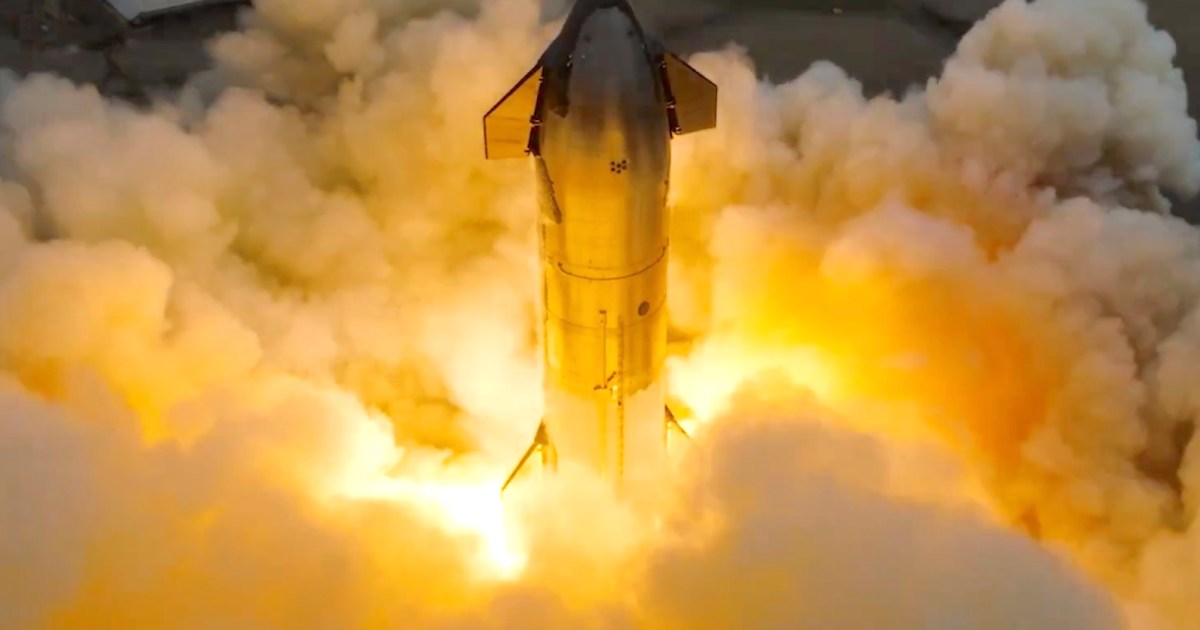SpaceX is edging toward the ninth test flight of its mighty Starship, the most powerful rocket ever to fly.
The Elon Musk-led company has yet to name a date for the upcoming flight, but just a couple of days ago it shared images of the upper-stage spacecraft on its way to preflight testing, suggesting the launch could happen in the next week or two.
While SpaceX has yet to reveal in any great detail the main objectives for its ninth Starship flight, it’s possible to make some reasonable assumptions based on some of its online posts and other media coverage from the last few months.
For example, the ninth test will be the first time that SpaceX attempts to reuse a first-stage Super Heavy booster. Booster 14 took its first flight on the seventh Starship test flight in January 2025. Shortly after separating from the Starship spacecraft, the first-stage booster returned safely to the clutches of the launch tower’s mechanical arms, paving the way for reuse.
Such a system is critical for reducing costs and increasing operational efficiency for the Starship program, which in the coming years is expected to carry crew and cargo to the moon and even Mars.
SpaceX is also expected to attempt an in-flight relight of the Starship spacecraft’s engines during the ninth test. This maneuver, last performed successfully during the sixth flight, is essential for future missions involving orbital refueling, return-to-launch-site operations, and missions to deep space.
This particular Starship spacecraft — Ship 35 — will be flying for the first time, and will include significant upgrades, including redesigned flaps and an improved heat shield. The new flaps are smaller and have been positioned differently to enhance control during atmospheric reentry and reduce heat exposure. The spacecraft’s heat shield has also been upgraded.
Following two difficult flights — in January and March — that saw the loss of the spacecraft before it could reach its target landing spot in the Indian Ocean, SpaceX is under pressure to perform a flawless mission that validates the recent upgrades and operational changes. NASA, for example, will be keen to see some concrete progress as it has contracts to use the Starship for its Artemis program, which is aiming to land humans back on the moon in 2027.


